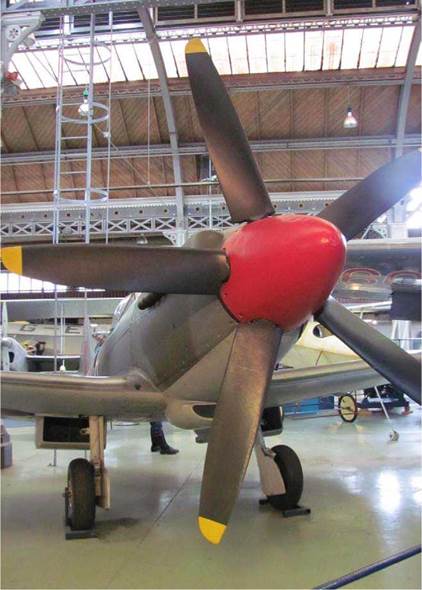Spitfires and Hurricanes
The Supermarine Spitfire of Second World War fame first flew with a two-blade, fixed-pitch, wooden prop during 1938-9. By the early stages of the war in 1940, the two-blade propeller had been exchanged for a metal three-blade, constant-speed prop. In 1942, the Spitfire Mark IX was flown with a four – blade propeller to absorb the increased brake horsepower of the more powerful engines that followed. Late model Spitfires with the Griffon 65 engine or similar, were powered by a five – blade prop and later still, with a six-blade contra-rotating propeller

|
The Spitfire’s stable mate, the Hawker Hurricane was similarly equipped with the early models flying with a Watts, two-blade, fixed-pitch wooden prop. In 1939-40, the two – blade prop was swapped for a three-blade metal, two-position VP propeller. Canadian built Hurricanes with the Merlin III engine powered a DH-Hamilton Standard Hydromatic, three – blade propeller











